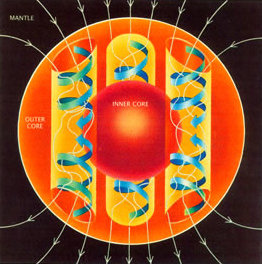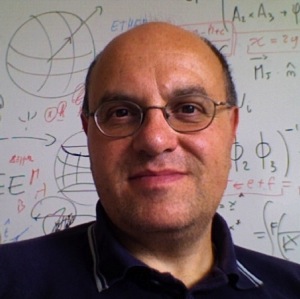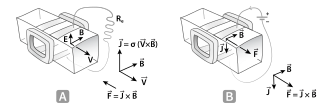Topological ideas are relevant to fluid dynamics (including magnetohydrodynamics) at the kinematic level, since any fluid flow involves continuous deformation of any transported scalar or vector field. Problems of stirring and mixing are particularly susceptible to topological techniques. Thus, for example, the Thurston–Nielsen classification has been fruitfully applied to the problem of stirring in two-dimensions by any number of stirrers following a time-periodic 'stirring protocol' (Boyland, Aref & Stremler 2000). Other studies are concerned with flows having chaotic particle paths, and associated exponential rates of mixing (Ottino 1989).

In physics and engineering, fluid dynamics is a subdiscipline of fluid mechanics that describes the flow of fluids—liquids and gases. It has several subdisciplines, including aerodynamics and hydrodynamics. Fluid dynamics has a wide range of applications, including calculating forces and moments on aircraft, determining the mass flow rate of petroleum through pipelines, predicting weather patterns, understanding nebulae in interstellar space and modelling fission weapon detonation,

Magnetohydrodynamics is the study of the magnetic properties and behaviour of electrically conducting fluids. Examples of such magnetofluids include plasmas, liquid metals, salt water, and electrolytes. The word "magnetohydrodynamics" is derived from magneto- meaning magnetic field, hydro- meaning water, and dynamics meaning movement. The field of MHD was initiated by Hannes Alfvén, for which he received the Nobel Prize in Physics in 1970.
In mathematics, Thurston's classification theorem characterizes homeomorphisms of a compact orientable surface. William Thurston's theorem completes the work initiated by Jakob Nielsen (1944).
At the dynamic level, the fact that vortex lines are transported by any flow governed by the classical Euler equations implies conservation of any vortical structure within the flow. Such structures are characterised at least in part by the helicity of certain sub-regions of the flow field, a topological invariant of the equations. Helicity plays a central role in dynamo theory, the theory of spontaneous generation of magnetic fields in stars and planets (Moffatt 1978, Parker 1979, Krause & Rädler 1980). It is known that, with few exceptions, any statistically homogeneous turbulent flow having nonzero mean helicity in a sufficiently large expanse of conducting fluid will generate a large-scale magnetic field through dynamo action. Such fields themselves exhibit magnetic helicity, reflecting their own topologically nontrivial structure.

In physics, the dynamo theory proposes a mechanism by which a celestial body such as Earth or a star generates a magnetic field. The dynamo theory describes the process through which a rotating, convecting, and electrically conducting fluid can maintain a magnetic field over astronomical time scales. A dynamo is thought to be the source of the Earth's magnetic field and the magnetic fields of Mercury and the Jovian planets.
The helicity of a smooth vector field defined on a domain in 3D space is the standard measure of the extent to which the field lines wrap and coil around one another. As to magnetic helicity, this "vector field" is magnetic field. It is a generalization of the topological concept of linking number to the differential quantities required to describe the magnetic field. As with many quantities in electromagnetism, magnetic helicity is closely related to fluid mechanical helicity.
Much interest attaches to the determination of states of minimum energy, subject to prescribed topology. Many problems of fluid dynamics and magnetohydrodynamics fall within this category. Recent developments in topological fluid dynamics include also applications to magnetic braids in the solar corona, DNA knotting by topoisomerases, polymer entanglement in chemical physics and chaotic behavior in dynamical systems. A mathematical introduction to this subject is given by Arnold & Khesin (1998) and recent survey articles and contributions may be found in Ricca (2009), and Moffatt, Bajer & Kimura (2013).

A corona is an aura of plasma that surrounds the Sun and other stars. The Sun's corona extends millions of kilometres into outer space and is most easily seen during a total solar eclipse, but it is also observable with a coronagraph. The word corona is a Latin word meaning "crown", from the Ancient Greek κορώνη.







